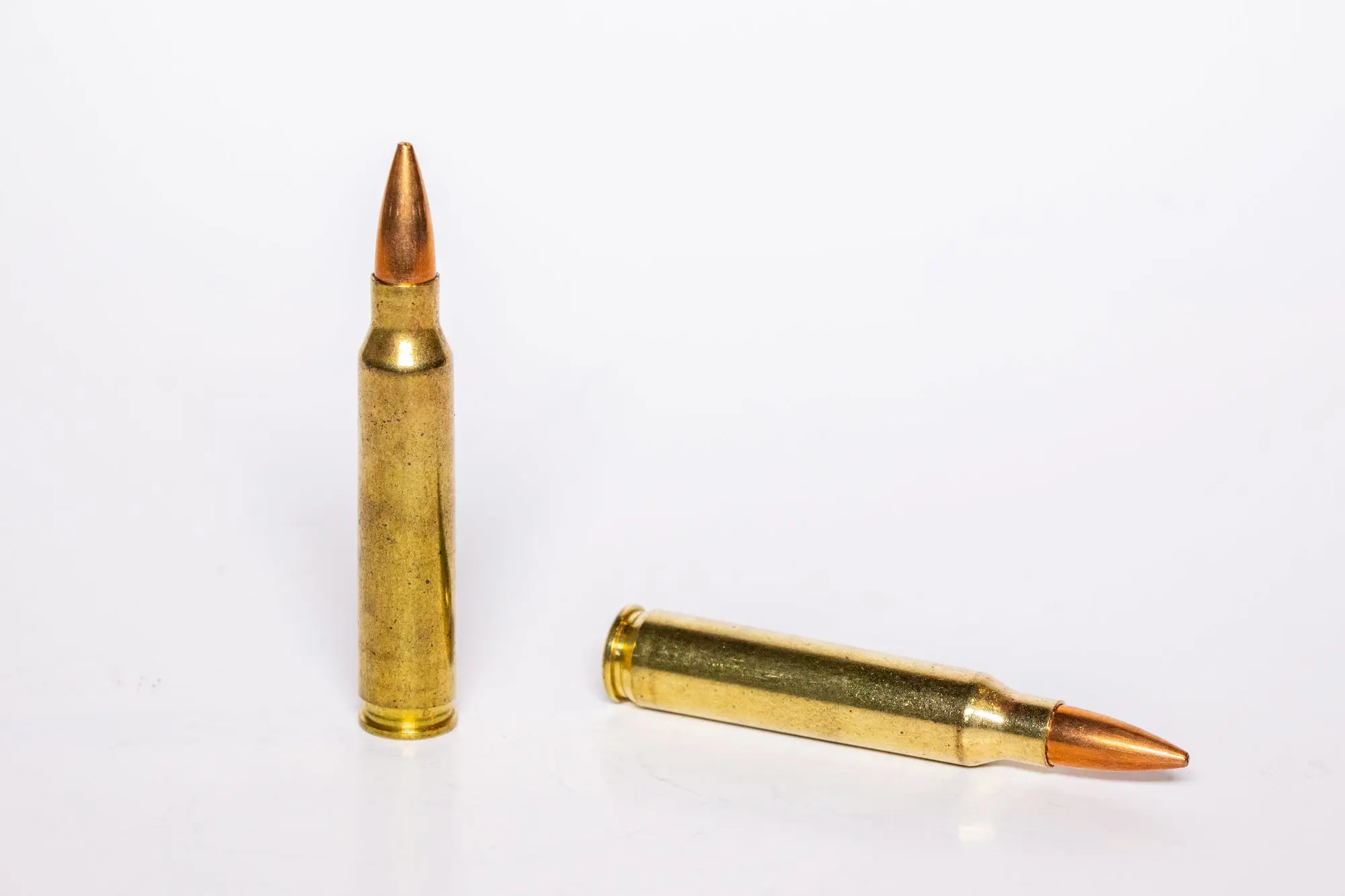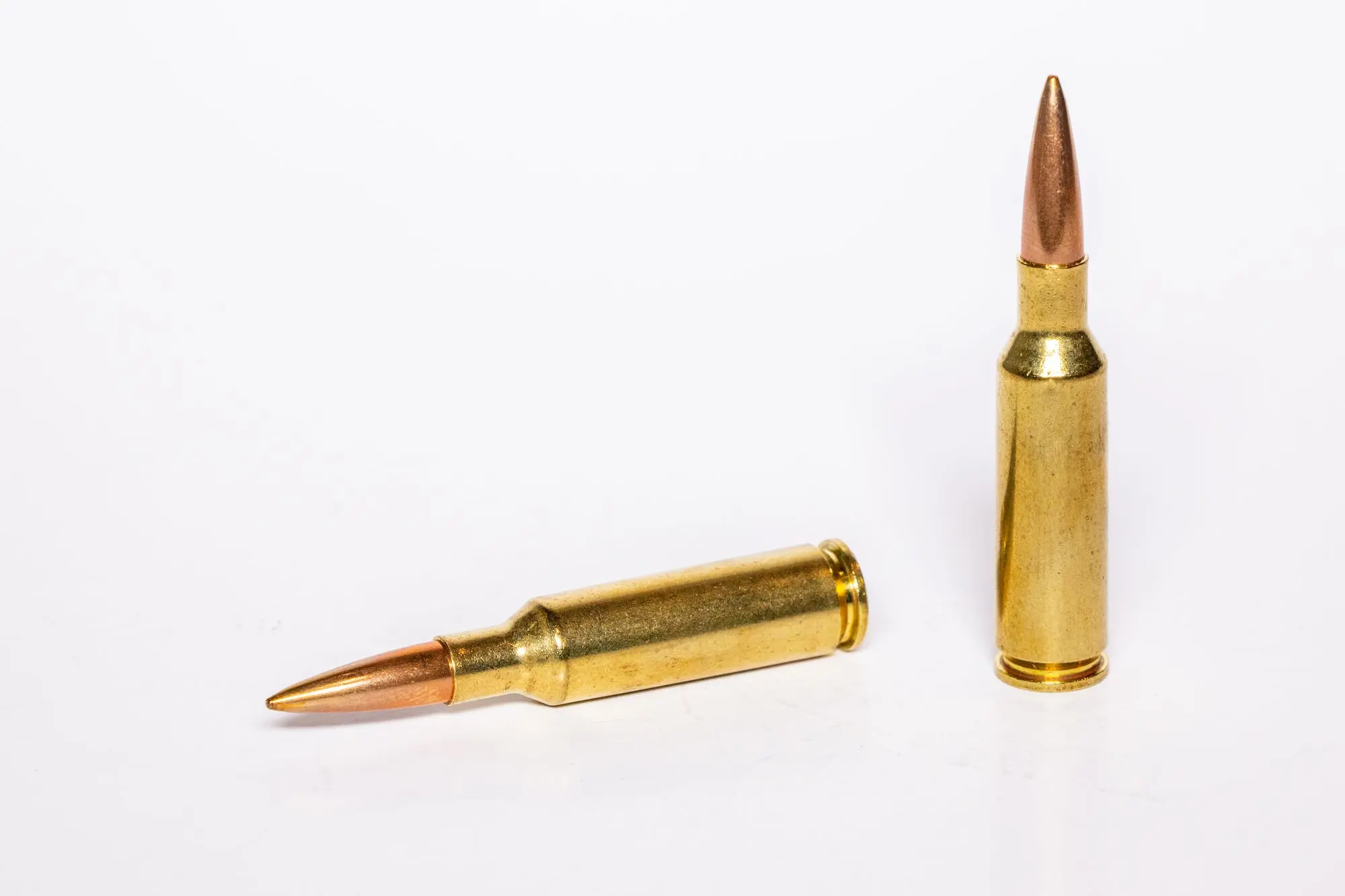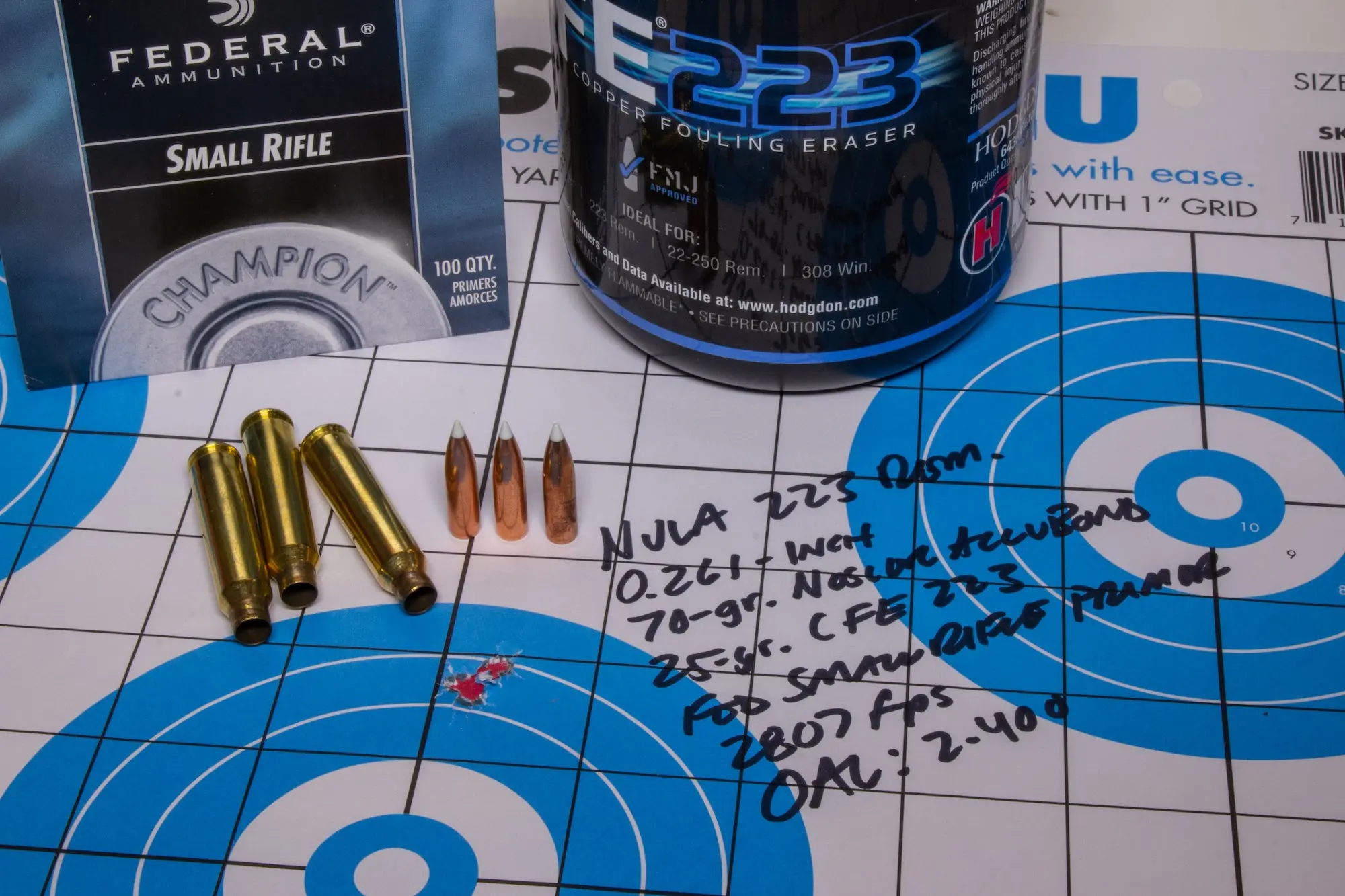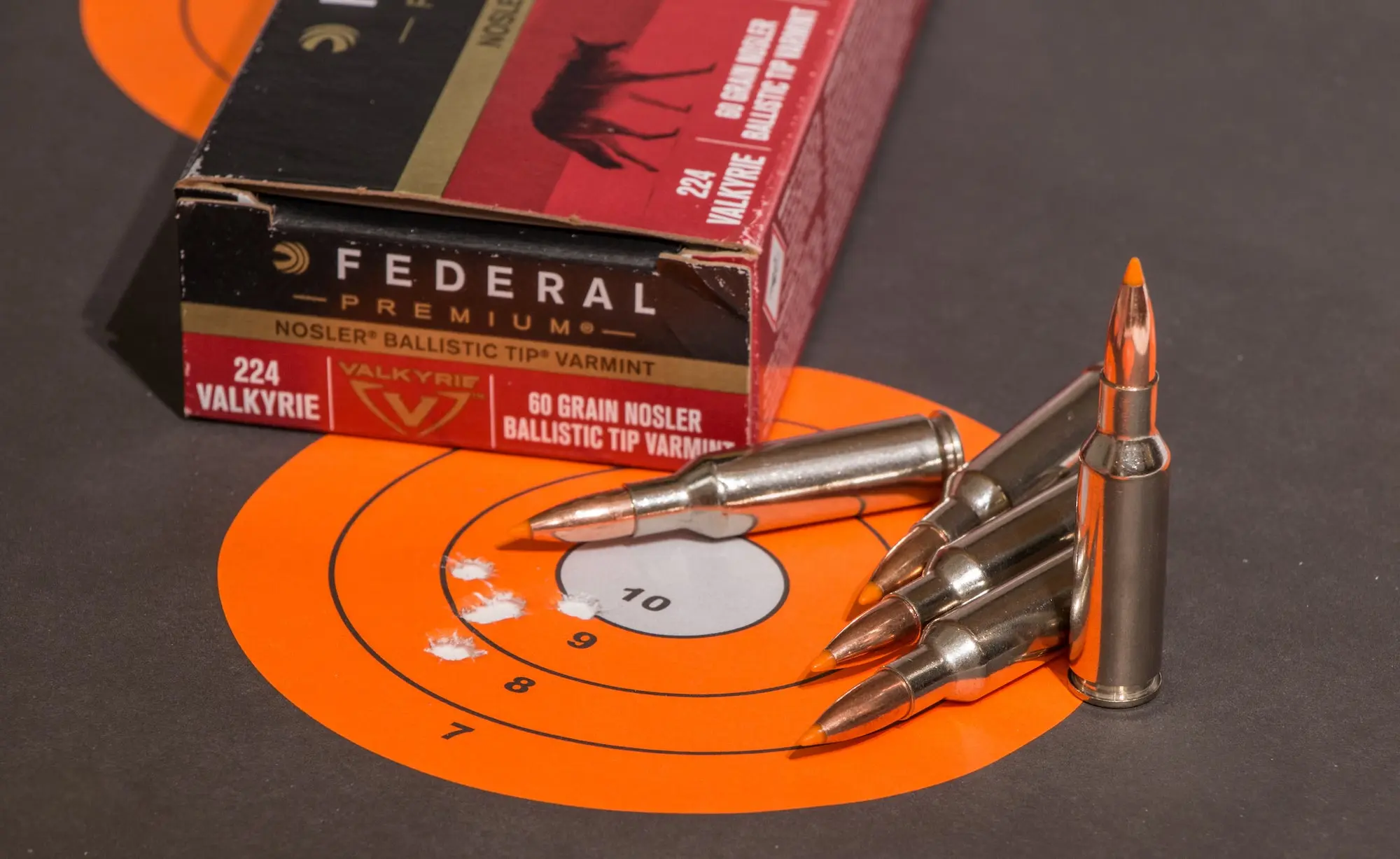_We may earn revenue from the products available on this page and participate in affiliate programs. Learn more ›
_
Comparing rifle cartridges is not always as straightforward as it might seem. Just because one cartridge shoots faster, flatter, and hits harder, does not always mean it’s the best option for you. Cost, application, and rifles available, should also always play a part in any cartridge decision. The 223 Remington has long been the most popular 0.22-caliber centerfire rifle cartridge, but a newer and faster option called the 224 Valkyrie has been around for a while and is turning heads. When it comes to the 224 Valkyrie vs 223 Remington, which one is better for you?
Table of Contents
223 Remington
224 Valkyrie
Velocity Comparison
Energy Comparison
Trajectory Comparison
Recoil Comparison
Application Matters Most
223 Remington

The 223 Remington. Richard Mann
The 223 Remington came to us through the development of the ArmaLite AR15 rifle. It’s based on the 222 Remington cartridge and was introduced to the public in 1964. Not only is it the most popular chambering for the AR15, but it is also very popular in bolt action rifles. There are few things a man cannot do with a sharp knife and a 223 Remington. From an external dimension standpoint, it’s identical to the 5.56 NATO military cartridge. The difference is the 5.56 NATO is loaded to a higher pressure and the chamber that’s cut into a 5.56 NATO rifle’s barrel is slightly different. You can safely fire 223 Remington ammunition in a 5.56 NATO rifle but shooting 5.56 NATO ammo in a rifle chambered for the 223 Remington is not advisable. However, some 223 Remington rifles have what’s called the “Wylde chamber” and can safely handle both.
224 Valkyrie

The 224 Valkyrie. Richard Mann
The Valkyrie was introduced by Federal in 2017 and it uses a slightly larger diameter case than the 223 Remington. Though loaded to the same maximum average pressure as the 223 Remington, the Valkyrie’s case will hold about 7 percent more gunpowder, and over the range of suitable bullet weights, this generally translates to about a 3 to 8 percent increase in muzzle velocity. That, and its stipulated rifling twist rate of 1 in 7, gives the Valkyrie the ability to push heavier, higher ballistic coefficient bullets at slightly faster speeds. The 224 Valkyrie has found a home with those interested in shooting at long range with the AR15.
224 Valkyrie vs 223 Remington: Velocity Comparison
One of the fastest factory loads for the 223 Remington is Hornady’s Superformance 35-grain NTX
bullet at 4000 fps. The fastest factory 224 Valkyrie load is the 60-grain V-Max
load from Hornady with a muzzle velocity of 3300 fps. If you compare the trajectory of the 224 Valkyrie vs 223 Remington with these two loads with both zeroed at 100 yards, the 35-grain bullet from the 223 Remington will drop six inches less than the 60-grain bullet from the 224 Valkyrie at 500 yards. But when comparing the cartridges loaded with more similar bullet weighs in factory ammunition, the Valkyrie will have a 100 to 200 fps advantage.
Advantage: 224 Valkyrie

If your 223 Remington has a fast twist barrel, you can handload it with high ballistic coefficient bullets and cut into the ballistic advantage of the 224 Valkyrie. Richard Mann
224 Valkyrie vs 223 Remington: Energy Comparison
Although kinetic energy is often used to compare different loads and cartridges, it’s less important than bullet impact velocity, bullet design, and how both work together to establish terminal performance. Hornady’s 75-grain BTHP
load for the 224 Valkyrie has an advertised velocity of 3000 fps with 1499 foot-pounds of energy at the muzzle. Hornady offers the same bullet for the 223 Remington at 2790 fps with 1296 foot-pounds of muzzle energy. But Hornady’s Superformance 223 Remington load with the same bullet zips out the barrel at 2930 fps with 1429 foot-pounds of energy. This drastically cuts the advantage of the Valkyrie. Still, with most bullet weights, the Valkyrie is going to have a slight kinetic energy advantage.
Advantage: 224 Valkyrie
224 Valkyrie vs 223 Remington: Trajectory Comparison
We touched on trajectory earlier, but that was with the lightest—fastest—factory loads for the 224 Valkyrie vs 223 Remington. When you step up to bullets suitable for big game
or long-range competition shooting
, the faster velocity of the Valkyrie and its compatibility with heavier and higher BC bullets, gives it a slight edge. It should also be mentioned that the SAAMI specified rifling twist rate for the 223 Remington is 1 turn in 12 inches. 223 Remington rifles with those twist rates will not reliably stabilize bullets weighing much more than 55 grains. For a 223 Remington to compete with the 224 Valkyrie it must have either a 1 in 8 or 1 in 7 rifling twist rate. Fortunately, many modern 223 Remington rifles do, so keep this in mind when making your selection.
Advantage: 224 Valkyrie
224 Valkyrie vs 223 Remington: Recoil Comparison
Given a seven-pound rifle, most 75-grain bullets fired from a 223 Remington will generate about 4.5 foot-pounds of free recoil energy. The same bullet out of a 224 Valkyrie will generate about another foot-pound of energy. You’ll have a hard time distinguishing between the two and there’s just not enough difference to matter. And if an additional foot-pound of free recoil energy concerns you or bruises your shoulder, you might want to stick to air rifles or BB guns.
Advantage: Tie

Though heralded as a cartridge that can handle heavy-for-caliber bullets, there are factory, light-bullet varmint loads for the 224 Valkyrie. Richard Mann
Application Matters Most
One distinct advantage the 223 Remington has over the Valkyrie is that there are almost 10 times as many factory loads to choose from. This same advantage extends to rifles. You’ll find a lot more 223 Remington rifles of all styles than you will 224 Valkyrie rifles. The 223’s advantage in both areas is important when you’re trying to find a rifle and ammunition that will allow you to do the things you want to do. Handloading circumvents this advantage but never underestimate the value of being able to purchase loaded ammo for your rifle.
The core of this comparison is mostly about what you plan to do with your rifle. For recreation or sport shooting, the factory ammo advantage of the 223 Remington is hard to overlook. There are over a hundred more 223 loads to choose from, and the least expensive 224 Valkyrie will cost about 40 percent more than the least expensive load for the 223 Remington. When it comes to hunting rodents, varmints, or smallish big game, there’s not that much ballistic difference between the 224 Valkyrie vs 223 Remington. With the same bullet, the 224 Valkyrie will deliver the about same terminal performance as the 223 Remington, but it will do it at about 50 to 100 yards further down range.
**Read Next: The 10 Best Rifle Cartridges for Varmint Hunting
**
When it comes to self-defense, the 223 Remington reigns supreme. This is partly because of the wide selection of self-defense loads available to choose from, partly because the 223 Remington’s smaller diameter case allows for a higher capacity magazine, and partly because there’s a better selection of properly configured 223 Remington rifles and carbines to choose from.
For long-range precision shooting the Valkyrie gets the nod with its ability to better handle higher BC bullets with a tad more velocity. Even though the 224 Valkyrie is a ballistically superior cartridge, this is the only application where I’d consider it over the 223 Remington.


